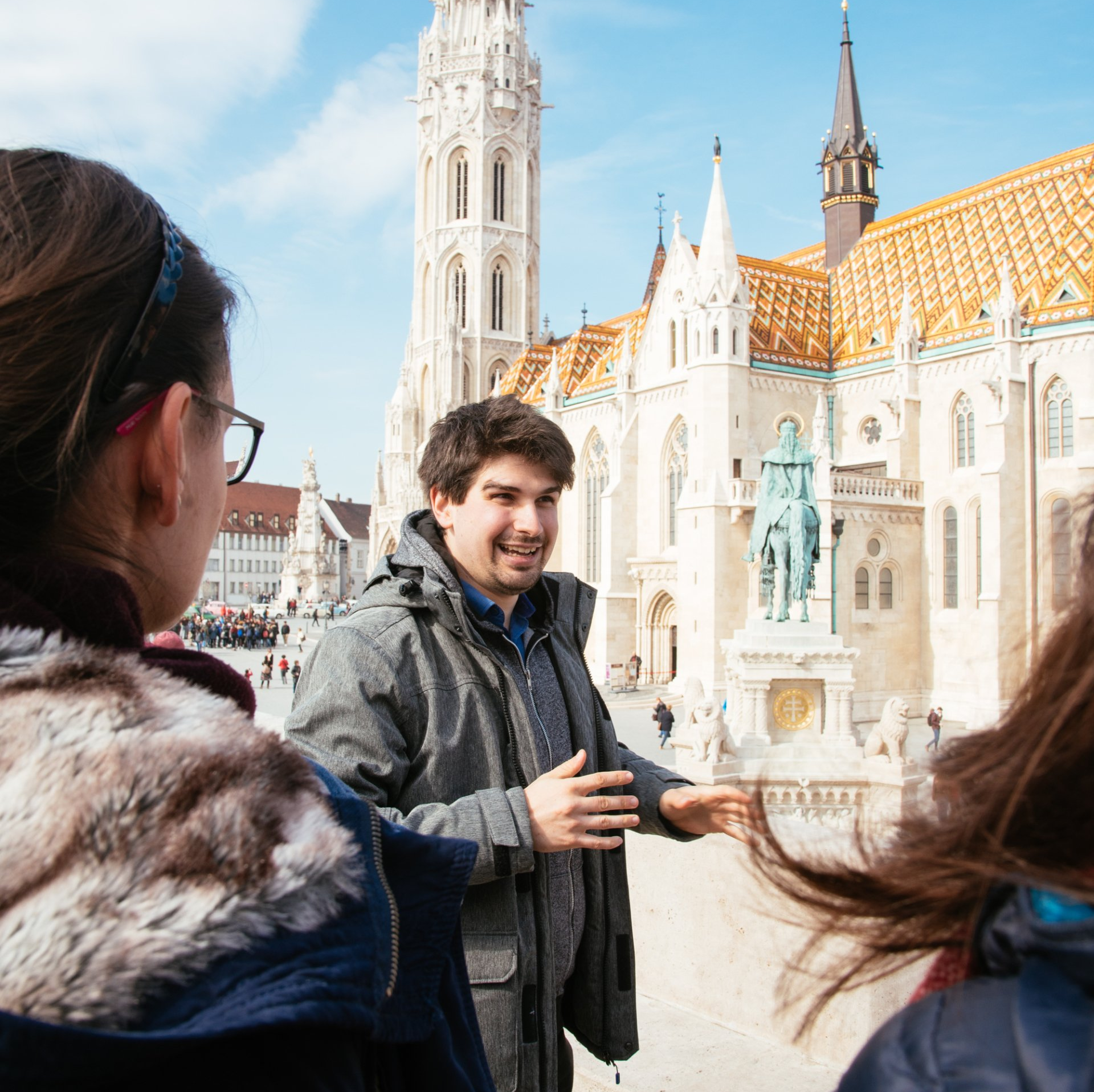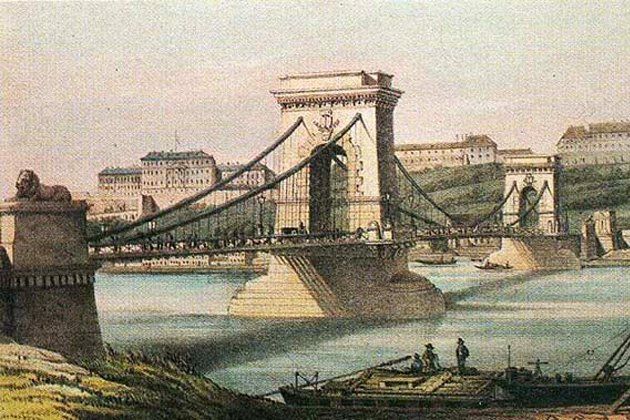24 Hours in Budapest: Must-See Spots
Only got 24 hours in Budapest? Don’t stress—it’s enough time to fall in love with the city. You’ll visit the major attractions (Parliament, Fisherman’s Bastion, and more), snack like a local, and even stumble into a few places most tourists never find. This isn’t your grandma’s travel guide (though hey, she’d probably love it too). Let’s make that one day count.
Morning (7:00–9:00): Sunrise in the Castle District
Start your day early—really early. Arrive at the Castle District around sunrise, when the cobbled streets are empty and the golden light hits the rooftops just right. It’s the perfect time to wander Fisherman’s Bastion without the selfie sticks, and the view over the Danube and Parliament is unbeatable.
Even for those who’ve seen it a dozen times, Matthias Church still has the power to stop you in your tracks. Step inside and you’re wrapped in rich, earthy reds and golds, with vaulted ceilings and intricate motifs, it feels less like a church and more like a jewel box.
Once you’ve had your fill of the fairytale vibes, head around the corner to
Ruszwurm Cukrászda—a tiny, centuries-old café that’s still beloved by locals. Order a strong coffee and one of their famous cream cakes (krémes), and soak in the old-world calm before the day truly begins.
Late Morning (9:00–12:00): Across the Danube to Local Life
From the Castle District, cross the Chain Bridge into Pest. It’s the perfect way to transition from the quiet hills of Buda to the liveliness of the city’s heart.
Head straight for the Hungarian Parliament—its Gothic spires are even more impressive up close. Take a moment to admire the architecture before heading toward St. Stephen’s Basilica. If you’ve got the time, pop inside or take the elevator up to the dome for sweeping views of the city.
For lunch, skip the tourist traps and make your way to Ghetto Gulyás—a local favorite for a hearty, traditional Hungarian meal. The gulyás here is as authentic as it gets, and it’s the perfect way to fuel up before the afternoon.
Afternoon (14:00–17:30): Unwind and Explore
After lunch in the Jewish Quarter, it’s time to relax and recharge.
Széchenyi Baths is the perfect spot to relax after the morning's sightseeing. While it's a popular tourist destination, its grand architecture and expansive thermal pools make it a quintessential Budapest experience. Located in City Park, just a short ride on the Metro Line M1 from Deák Ferenc tér directly to Széchenyi fürdő station. The grand architecture and peaceful thermal pools are the perfect way to unwind.
Prefer to stay dry? Stick around the Jewish Quarter and settle into Solinfo Café—a stylish, tucked-away spot that’s perfect for a slow afternoon. Order a coffee and try the flódni, a rich, layered Jewish-Hungarian pastry filled with walnut, apple, and poppy seed. It’s a local favorite and not something you’ll easily come across outside of Hungary.
Evening (18:00–20:30): Sunset Over the Danube
As golden hour rolls in, trade sightseeing for a slower pace. For sunset, you’ve got two solid options—both loved by locals, each offering a different vibe.
If you're in the mood to keep it chill, head to Liberty Bridge. On warm evenings, locals climb up and sit right on the bridge beams, legs swinging above the river, watching the sun dip behind Bthe Castle District. It’s spontaneous, relaxed, and about as local as it gets. Bring a drink, maybe something sweet, and take it all in.
Prefer something smoother? Go for a sunset cruise on the Danube. Yes, it’s a little touristy—but in the best way. As the boat glides beneath the city’s iconic bridges and past the glowing Parliament, you’ll catch golden-hour views of Margaret Island, a leafy escape right in the middle of the river. It’s a whole different perspective on Budapest, quiet and cinematic. Add a glass of wine, and it’s a vibe.
Night (21:00–Late): Ruin Bars with Soul
No trip to Budapest is complete without a stop at Szimpla Kert. As the original ruin bar, it’s a wild mashup of art, antiques, and urban chaos—a cultural icon and a rite of passage for first-time visitors. Swing by, soak up the atmosphere, snap a few photos—but then keep moving.
To experience where locals actually spend their nights, head over to Füge Udvar. A more spontaneous, this open-air courtyard bar draws a steady local crowd with its relaxed vibe, wallet-friendly drinks, and eclectic mix of music. It doesn’t try too hard—and that’s exactly the point. Grab a beer and settle in for a proper end to your 24 hours in Budapest.
Best Practices for 24h in Budapest:
- Grab a 24-hour Budapest-travelcard – It’s a cost-effective way to get around quickly and efficiently, especially if you plan to explore multiple areas. You can purchase this pass from any of the purple BKK machines throughout the city.
- Walk as much as possible – Budapest is a city best discovered on foot. From charming streets to stunning riverside views, you’ll find beauty at every corner.
- Skip the restaurants on Váci Street – They tend to be overpriced and lack authenticity. For a true taste of Budapest, venture off the main tourist paths.
- Try a “fröccs” – This refreshing Hungarian wine spritzer is a local favorite, especially on warm days. Affordable, light, and perfect for sipping as you relax.
About the Author

Daniel Draskóczy
Co- Founder, Tour Guide
Szia! :) My name is Daniel and I've been a tour guide for 7 years. I hold degrees in history and international relations. After living in 3 countries and guiding in 19, I decided to settle down and focus on Budapest. I'm a proud husband and a father. Besides guiding I coordinate a European education program and I write a blog.
I aim to show you the real Budapest: from history and cultural background to the everyday lives of people: the good, the bad - and if you want to hear - the ugly. Get ready for an honest, in-depth experience of Budapest!
My hobbies include reading, movies, writing about self-improvement and travelling.
